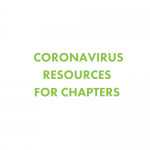Exhibition Details
 "Pride and Passion" gives libraries many perspectives from which to develop programs for public audiences. Besides exploring the history of baseball and examining how the treatment of black players reflected conditions in American society, public programs can focus on individual players, barnstorming, the Negro Leagues, the conditions players faced when they traveled, baseball rules and how they changed through the decades, and a myriad of other sports and history topics. Through a cultural timeline of American history which will be part of the exhibit, visitors will be able to place the African American baseball story into the larger context of American history and see how it intersects with major events such as the Dred Scott Decision, the Civil Rights Act of 1866, the passage of the Fifteenth Amendment, Jim Crow laws,
Plessy vs. Ferguson, the Great Migration to the North,
Brown vs. the Board of Education, the Civil Rights Act of 1964, and many more.
"Pride and Passion" gives libraries many perspectives from which to develop programs for public audiences. Besides exploring the history of baseball and examining how the treatment of black players reflected conditions in American society, public programs can focus on individual players, barnstorming, the Negro Leagues, the conditions players faced when they traveled, baseball rules and how they changed through the decades, and a myriad of other sports and history topics. Through a cultural timeline of American history which will be part of the exhibit, visitors will be able to place the African American baseball story into the larger context of American history and see how it intersects with major events such as the Dred Scott Decision, the Civil Rights Act of 1866, the passage of the Fifteenth Amendment, Jim Crow laws,
Plessy vs. Ferguson, the Great Migration to the North,
Brown vs. the Board of Education, the Civil Rights Act of 1964, and many more.
The traveling exhibition content is arranged in six thematic sections, a breakdown that separates the story into cohesive chronological sections and allows flexibility to participating libraries in the display of the exhibition.
- Finding a Way in Hard Times (1860-1887)
- Barnstorming on the Open Road (1887-1919)
- Separate Leagues, Parallel Lives (1920-1932)
- Paving the Way to Integration (1933-1946)
- Signposts for Opportunity (1947-1959)
- Baseball’s Post-Integration Era (1959-present)
The exhibition consists of six separate, free-standing sections; each section is approximately 18 feet wide and 7-1/2 feet high (108 running feet). Text and illustrations appear on only one side of the sections. The entire exhibition requires approximately 1,000 square feet of space for optimal display. Libraries that apply are strongly encouraged to make a computer station or stations available near the exhibit so that viewers can access websites with additional educational activities for all ages.
All libraries chosen for the exhibition tour are required to:
- Sign an agreement with the exhibit sponsors agreeing to hosting and display requirements.
- Sponsor an opening reception for the public.
- Present a minimum of two programs featuring a lecture/discussion by a scholar in the humanities and focusing on exhibition themes (one of these programs may be combined with the opening reception). These programs must be free and open to the public. Exhibition sites are encouraged to apply to state humanities councils for honoraria for lecturers and/or discussion leaders.
- In the case of academic and special libraries, present at least one program that is open to and marketed to public audiences beyond the library’s customary user groups. Academic and special library applicants are asked to contact the local public library to discuss possible collaborations on programming and publicity.
- Demonstrate that they have sufficient space to display the exhibition (1,000 square feet in one area of the library or other display area is preferred), and that they can provide security for the exhibit; i.e., monitor the exhibit at least every half-hour during peak times and every hour at less busy times when institution is open. A description of the exhibit space or floor plan should accompany the application.
- Charge no fees for viewing the exhibit.
- Provide required reports, including an exhibition condition report and a final report, to sponsors by the deadline.
- Appoint one staff member as the local coordinator of the exhibit. The coordinator is required to attend an exhibition planning workshop, to held in Cooperstown, N.Y., in September 2008.
Libraries selected for the tour will receive:
- A $2,500 grant from the National Endowment for the Humanities for exhibit-related expenses; e.g., travel/accommodation expenses for the exhibit coordinator's attendance at the planning workshop and exhibition programming expenses (The exhibit grant from NEH to the ALA will not pay for the coordinator’s travel or accommodation for the seminar.)
- The traveling exhibit for a six-week loan period; shipping is supported by the grant.
- Exhibit brochures and posters.
- Two banners that will travel to each site for display with the exhibition.
- Educational support materials.
- Insurance coverage for reasonable damages to the exhibit. Sites may be held responsible for extensive damages or loss of the exhibit when it is under their control. Some previous exhibition sites have put a rider on their insurance for the exhibit display period, although this is not required.
- Both print and online site support notebooks with press materials, art, shipping and installation instructions, suggestions for programming, and more.
- Technical and programming support from the ALA Public Programs Office throughout the tour, including participation in an online discussion list and a Wiki for tour sites.
- A planning workshop for exhibit coordinators September, 2008, at the National Baseball Hall of Fame and Museum in Cooperstown, N.Y. Attendees will be able to view the original “Pride and Passion” on exhibit at the museum.



